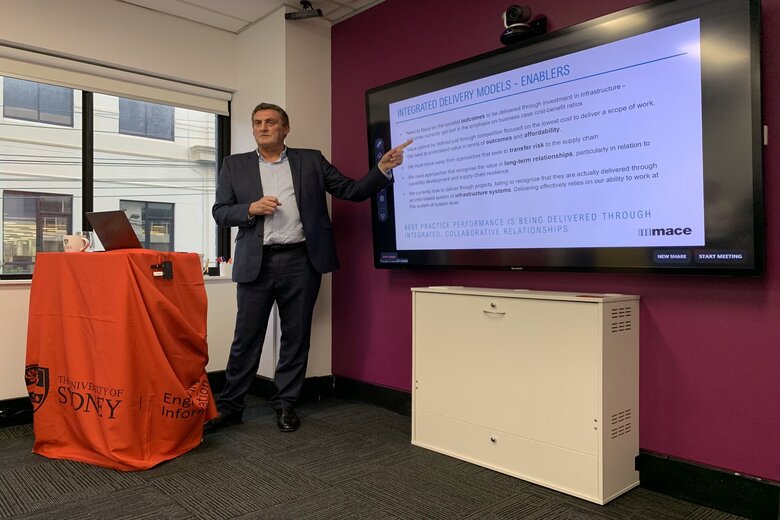
Dale Evans is the chair of Project 13, a UK-based group of infrastructure owners and suppliers seeking to change the way in which major infrastructure projects and programs are delivered in their country.

Evans is advocating for a shift from a cost-driven transactional model of procurement to an enterprise model based on collaborative relationships between owners, partners, advisers and suppliers.
Evans believes Australia can take a lesson from the UK experience of infrastructure delivery, which he says is characterised by projects that are over-budget, past deadline, innovation-adverse and below par.
He says Australia faces similar challenges to the UK, but is less ready to embrace reform, leaving it at risk of falling behind.
He spoke to Government News about his vision for change during a recent trip to Australia.
GN: what’s the purpose of your visit and what have you been up to in Australia?
DE: Along with various speaking engagements, we are supporting a number of progressive infrastructure clients in the development of new investment delivery models. Infrastructure Australia’s recent Delivering Outcomes report has provided an important opportunity for our sector, so the trip was also timed to coincide with follow up of the report.
The recent House of Reps Standing Committee on Infrastructure, Transport and Cities report on government procurement found Australia suffers from a piecemeal approach to infrastructure planning and project delivery, and recommends better planning and coordination of the infrastructure pipeline. What are your views on its recommendations?
I am strongly supportive of the report’s recommendations, particularly given the wide and meaningful consultation that was undertaken. The report sets out some really important recommendations; particularly in terms of procurement shifting to a best value rather than lowest cost approach, on the opportunity to increase sovereign capacity through increased access to the wider supply system, on the accelerated adoption of digital technology – and on the strong recommendations that the sector adopt proven, best practice approaches such as Project 13.
You say Australia has a ‘stretched market capability’ when it comes to infrastructure and the traditional approach to procurement and engagement by government has delivered little innovation. Can you expand on this?
The traditional approach to procurement and an emphasis on lowest cost has led to a low margin contracting model where there is little opportunity for delivery partners to invest in future skills and innovation. This approach to procurement also places an overriding emphasis on the main consulting and contracting partners, with little recognition of or engagement with the wider supply ecosystem. Given the significant capability and innovative potential that exists within this wider group the traditional approach has failed to create the opportunity for innovation that other sectors have shown can come from wider supply networks and relationships.
You suggest that Australia has an ‘unsustainable contracting model’ and an outdated approach to procurement that puts it at risk of falling behind. What are some specific examples of this?
Much of this relates back to the recommendations in the government procurement report. There is still an overriding emphasis on lowest cost, rather than the better outcomes that best practice models now recognise as the focus for infrastructure investment. Clients are still looking to transfer rather than allocate risk to the right capability, leading to adversarial and unsustainable conditions. Lowest cost procurement fails to leverage partner and supplier capability and creates a low margin model. Limited engagement with the wider supply system fails to leverage existing capability – and misses the opportunity to develop a broader more sustainable capability.
Looking at local government, what are Australian councils getting right and wrong when it comes to procurement? What could they do better given current constraints?
The same challenges and opportunities exist at all levels of infrastructure investment. Equally the best practice examples that we should be learning from exist within all levels of infrastructure. Given the acute challenges in Australia, the opportunity to work with local regional ecosystems is an opportunity that councils should be taking. Another is to focus investment on outcomes for people and places, not on outputs at lowest cost
Comment below to have your say on this story.
If you have a news story or tip-off, get in touch at editorial@governmentnews.com.au.
Sign up to the Government News newsletter
Most read
Scathing report finds little has changed at PwC
Qld council welcomes progress on massive battery system
‘Local’ procurement turns out not to be so local, committee hears
Another report finds local government falling down on cyber security
MoG changes see regions, investment return to NSW Premier’s Department